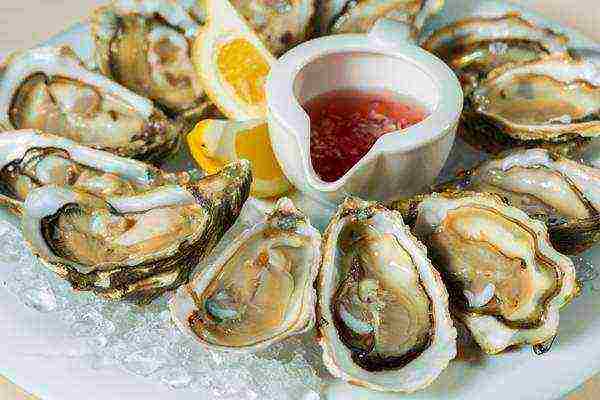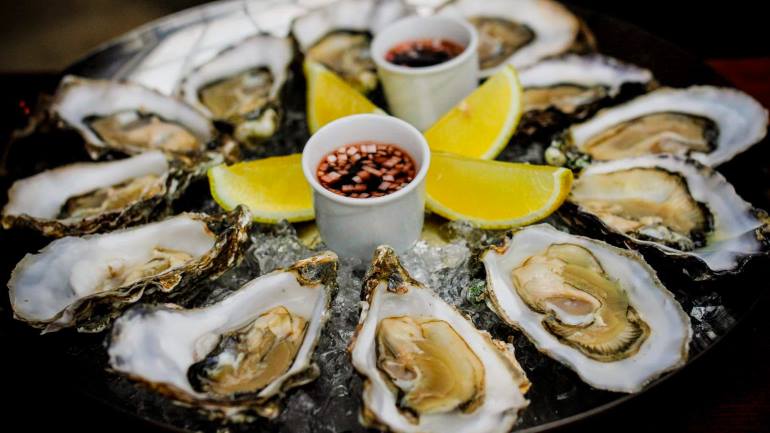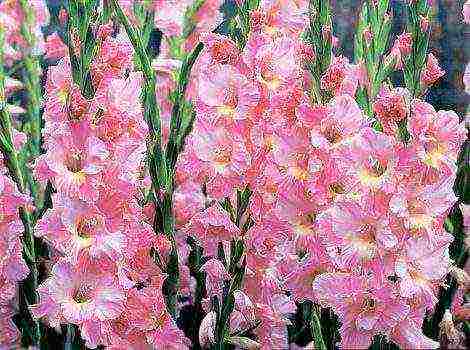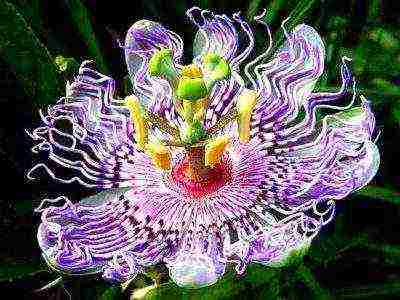Content
- 1 Features of the oyster breeding process
- 2 What do you need for a farm?
- 3 Investment and return on business
- 4 Expected profit
- 5 We equip a natural type farm
- 6 Harvesting process
- 7 What is needed for artificial breeding?
- 8 Economic feasibility and approximate investment in your business
- 9 Business registration issues
Sea molluscs - oysters and mussels - are a valuable meat product, not only in terms of nutritional quality, but also in terms of cost. Eating oysters has been practiced for hundreds of years. It is not surprising that the cultivation of these valuable shellfish is put on the industrial rails of the business. Looking ahead, I would like to say that it is a very profitable business.
Even Alexander Sergeevich Pushkin himself was a great lover of oysters and often mentioned them in his works, for example, in the great work "Eugene Onegin" there are several lines about oysters.
Even today, the demand for oysters exceeds the supply. Fresh oysters are always welcome in restaurants and cafes. Therefore, more and more people are starting a business to grow and sell mussels and oysters.
The cultivation of these mollusks, conditionally, can be divided into 2 methods - natural and artificial. The natural way is suitable for residents of warm sea coasts. In Russia, this is a vast coastline of the Black Sea - from Sochi (Krasnodar Territory) to Sevastopol (Republic of Crimea). Therefore, the natural way of breeding oysters as a business can be recommended to the inhabitants of these regions.
Differences between mussels and oysters
Before we start describing the business, I would like to tell you how these mollusks differ among themselves. Although they belong to the same class, they are completely different. Mussels are smaller than oysters and are unpretentious, they can also move along the bottom. Oysters, several times larger than mussels, are sedentary and are not able to "walk". Also, they differ in appearance: mussels have a smooth shell with sharp edges, oysters are rough to the touch with wavy shells.
Mussels should never be eaten raw. Oysters, on the other hand, are most often served raw.
While mussels are a delicacy, the cost of mussels is much less than that of oysters, this is due to the fact that mussels are much easier to breed. Therefore, the further description of the business we will only talk about oysters.
The natural way to breed oysters
Oysters grow very slowly to full adulthood, about 3 years. But, for their breeding, it is not necessary to buy "seedlings" and feed them. The sea brings oyster fry, they grow in their natural environment. All you need is not a tricky set of tools, seaside and patience.
This business begins by collecting spat (young) oysters for collectors exposed to the sea during the breeding season. Which takes place from spring to late summer. All this time, the collectors must be in place. The oyster larvae that have settled on them grow up during this time. After which they are transferred from the collectors to the poshi (from fr. poche - pocket), frames covered with mesh or plastic bags. The pools are placed slightly above the bottom, on poles, thus protecting young oysters from natural enemies - sea stars and silting up of frames. All this time, oysters feed on plankton brought in by the sea. Oysters are kept in pockets for 2 years. Then they are transferred to the nursery pools, where they gain their "presentation". There are several ways to give oysters more weight and meatiness.
So, for example, in nursery pools they are kept partially submerged in sea water, or fresh water is mixed in special pools with sea water (clears). The fact is that oysters try to retain seawater inside their shells, which leads to an increase in the elasticity and mass of the muscles responsible for the movement of the valves. This increases the value of the oysters.
In these basins, oysters are kept until the moment (about a year) of sale.
Then the oysters are collected, washed, sorted and sold.
On this, the oyster growing business can be considered successful. By the way, the payback of this business comes in 1 season, although the season lasts almost 3 years. But, with a logical approach, you can "start" oysters every year, reducing the waiting time between batches - up to a year.
An artificial way of breeding oysters
Modern technologies make it possible to breed oysters on an industrial scale, regardless of the location of production. So, recently, closed water supply installations have gained particular popularity, where you can get ideal conditions for growing oysters of all types and breeds. The cost of such installations is several tens of thousands of dollars, but these installations are versatile, economical and pay off very quickly. You can read more about RAS in our article - Business at RAS farms.
Classification of food oysters
Oysters are divided into wild (grown in the sea) and refined (grown in an artificial environment).

Also, oysters are subdivided by size, for concave ones: No. 5, No. 4, No. 3, No. 2, No. 1, No. 00 - from small to large. In Europe, size No. 3 is popular - from 80 to 100 grams, in Russia No. 2 - from 100 to 120 grams. For flat oysters, for example Black Sea (Crimean) oysters, the designation is somewhat different, their sizes are indicated by zeros, where four zeros is the largest size. In Russia, the most popular size of flat oysters No. 00 is 100-120 grams.
Video: how oysters are grown in Crimea
See also:
- 3 promising business ideas for breeding crayfish,
- top 20 business ideas for crisis and import substitution.
Questions, messages about errors or typos in this article, please leave in the comments.
Oysters are a popular dish in restaurants, so such a business can be very profitable for an entrepreneur who decides to grow oysters at home.
Features of the oyster breeding process
This activity has a number of features and advantages:
- No big investment needed;
- Harvesting will be possible at any time, as soon as the order is received;
- In Russia, business has not yet become widespread, so there will be little competition;
- Breeding shellfish is easy, because they are grown on a natural food base.
You can breed 10 types of different oysters, which differ in taste and some features of living that will need to be provided. The process of growing a mollusk necessarily includes the following work:
- Cleaning the cages from algae and dirt;
- Regular sorting of oysters and transferring them to large cages;
- Removal of the predator - rapana;
- Separation of shells that have grown together.
Once the shellfish have reached marketable size, they are immediately harvested and transported for processing. There they are washed, sorted, weighed, and then packed in boxes.
Useful article: Anti-cafe opening. Step-by-step instruction.
What do you need for a farm?
Oyster farming as a business will require the entrepreneur to comply with the following conditions for the farm:
- The ideal depth of the reservoir is 20 meters;
- The bottom of the reservoir should be flat;
- The farm will need to be protected from waves and all kinds of pollution;
- Provide enough oxygen and food for the shellfish;
- Microbiological analyzes of the water of the selected area should be carried out periodically.
The process of breeding oysters at home will require a lot of labor and a serious attitude to business.You will need knowledge of how to provide molluscs with optimal conditions for their existence.
It is important to remember that the taste of an oyster is influenced by a number of factors: the composition of the water, and the flow rate and feed. Thus, there are only three breeding options.
- The first is wild molluscs, which are simply harvested at low tide.
- The second - oysters are grown in cages, which are located on whole "fields".
- The third option is a combination of river and sea water, which contains oysters.
Thus, they become more meaty, which significantly increases their taste. It will not work to grow mollusks in an apartment.
For breeding, plastic collectors are used, which have metal plates of different shapes. Now you should place mollusks in them and wait, they will filter the water themselves, choosing their own food. The metal nets should be rotated periodically to prevent the shellfish from growing into the metal. Otherwise, they simply cannot be removed.
During 6 months of oyster growth, such an operation must be carried out at least 10 times. In general, their life span is 4 years, during which they grow and reach maturity. Moreover, the weight of each varies from 100 to 180 grams in exceptional cases. For shellfish food, plankton (tiny crustaceans and other microorganisms) will need to be diluted.
Oysters will not work with regular water, so it will be necessary to study hydrochemistry and accurately reproduce the seawater in an aquarium. The flow, water filtration and special lamps that will simulate the natural cycle of sunset and sunrise - all this will have to be spent.
We advise you to read: business in passenger transportation.
Investment and return on business
Breeding oysters will require large investments from a businessman. You need to be prepared for the fact that for the first few years the enterprise will be unprofitable and only in 3-4 years of operation the farm will begin to bring profit sufficient to cover all costs.
You don't have to spend a lot of money on shellfish maintenance, but the initial investment in the business will be very serious. The minimum investment is from 70 thousand dollars, but preferably 100 and more. The business is highly profitable and profitable as the demand for seafood is growing.
Expected profit
Oysters are very prolific and take at least 2 years to ripen. The harvest is removed in spring and autumn, it will be possible to collect about 500 thousand oysters. The price of one shellfish is about 2 euros.
An increase in profits is possible only in case of business expansion, lease of a coastal base, where oysters are sorted and packaged, etc. It is advisable to expand the number of collectors or lines in the case when stable buyers were found and demand for products was formed.
With the correct breeding of shellfish and solid investments in business development, you can count on making a profit already in the second year of the farm's operation. If we assume that the price of 1 piece is 2 euros, then an entrepreneur will earn 600 thousand euros from 300 thousand oysters, which makes it possible to more than recoup the costs.
You can treat oysters differently. But you cannot argue with the fact that their taste is unique. And since it became known to a person that this mollusk is the strongest aphrodisiac, interest in it has greatly increased and the demand for its meat, accordingly, has increased.
Since ancient times, oyster meat has been considered a delicacy. Only a select few, rich people could feast on it. This delicate pulp with a unique aroma and taste is revered in many countries.
Nowadays, not a single self-respecting restaurateur will not allow these mollusks to appear on the first line of the menu of his establishment. The oyster is a very picky person. In order to open her shell, you need a certain skill. But the result justifies all the efforts.It is worthwhile to taste the meat of an oyster once in order to fall in love with this incomparable delicacy for a lifetime.
In addition to their wonderful taste, these shellfish are famous for their usefulness. Their nutritional value is incredibly high. In order for the body to receive the daily portion of the trace elements it needs, you need to eat only 4 oysters.
Hence, they are as nutritious as they are useful. To replenish the reserves of vitamins of groups A, B, P and others, doctors recommend using these "seafood" as often as possible.
Practical Chinese have long appreciated the charm of this product and have been raising oysters in artificial conditions for thousands of years. Recently, many countries are actively adopting their experience in order to at least partially saturate the market with these seafood. The high demand for oysters is stable and continues to grow.
What are the features of growing this delicacy? Oyster farming is a lengthy process that requires a lot of patience and painstaking work. The cultivation of each large specimen lasts for 3-4 years. The main method of breeding shellfish is industrial.
This method is not surprising, since it uses the natural habitat to achieve the goal. Everything happens in the following way: in the coastal waters of the oceans there are many so-called "oyster fields".
They, thanks to the process of natural reproduction, are dotted with "babies" of these mollusks. When they reach one year of age (or a little earlier), the oysters are harvested and carefully transferred to water saturated with algae and plankton. After a couple of years, the clams reach their maturity and become suitable for serving.
Breeding oysters at home is much more difficult and requires not only a lot of work, but knowledge of the conditions and characteristics of growing these delicious shellfish. Since it is difficult to recreate the mineral composition of ocean waters, and their volumes are not small, there is a way of keeping oysters partially in the open air.
Being in unfavorable conditions for itself, the mollusk is forced to fight for its existence. Constant attempts to retain water in their shells lead to the fact that the fleshiness of the oysters increases significantly. Their fibers become more elastic, which increases the value of the product.
Absolutely everything affects the taste of the mollusk: the composition of the water, the speed of the current, the abundance of plankton, the density of the soil, and so on. Since oysters have been a favorite delicacy of the peoples of the Mediterranean since ancient times, its inhabitants have come up with very economical ways of breeding them. Everything ingenious, as you know, is simple: oysters were bred in nets, the same as for juvenile fish. This old way of growing shellfish is still relevant today.
If there is a possibility of free access to coastal ocean waters, anyone can grow oysters. Directly at home (for example, in a city apartment), oysters are not bred.
The fact is that it is difficult to achieve not only the full-fledged mineral composition of ocean waters, but mollusks need constantly renewed water, which brings fresh plankton. Moonlight, coupled with clean sea air, is also important for the development of oysters.
There is hardly anyone who wants to carefully monitor their wards, who are so demanding of their habitat, for at least a couple of years.
At the beginning of our era, a man took up the cultivation of oysters. He used selective breeding, and reportedly achieved very large sizes in some of the specimens. To give the clam meat a more piquant taste, before sending it to the table, he kept the oysters in water for several days, to which he added wine.
Thus, there are only three ways to breed oysters. The first is absolutely wild molluscs, which are collected at low tide. The second is caged oysters in "oyster fields." And the third way, combined: clams grown in the "clair".
This is the name of the places where the mixing of river and sea water takes place. Two-year-old oysters are moved to the "clears" for the so-called "refining", that is, so that they become more meaty and acquire excellent taste.
Mussels and oysters belong to sea molluscs and are distinguished by their special taste. The cost of such a product in restaurants is quite high, it is not surprising that many people wonder if it is possible to breed oysters at home and how to get the maximum profit from it.
Today, demand exceeds supply, restaurants and cafes are always happy with fresh shipments of shellfish. So even when selling at a wholesale price, which is less than the market price, the businessman still remains in the black.
Growing can be of two types: natural (more suitable for those entrepreneurs who live near the warm sea coast) and artificial. In general, the equipment of the farm in both cases will need approximately the same.
We equip a natural type farm

In this case, the conditions for breeding oysters should be as follows:
- The depth of the reservoir is not less than 20 meters.
- The bottom must be made as flat as possible.
- The farm must be protected from waves and algae contamination.
- Equipment for feeding the molluscs with food and oxygen should be purchased.
- Microbiological analyzes of the water must be done periodically at the breeding site.
Business does not require large labor costs, it is enough just to provide mollusks with comfortable conditions for living and reproduction.
Harvesting process
Growing oysters in a natural farm assumes that it takes an average of 3 years to grow to an adult and marketable shellfish. You will need to be patient and buy the necessary tools.
The entrepreneur begins by collecting young oysters during their breeding season in late spring - early summer. In the meantime, the settled larvae begin to grow.
Then they are transferred from the collectors to special pockets - these can be either simple plastic bags, or frames with a mesh stretched over them. They are placed so that the frames do not reach the bottom, this will protect the young oysters from their enemies in their natural environment.
For about 2 years, the oyster farm has been operating on these lines, all this time the mollusks feed on the plankton that the sea brings.
To get them a more attractive presentation and fleshiness, they are collected and transferred to nursery pools with sea water, which is partially mixed with a little fresh.
Due to the fact that oysters try to store as much seawater as possible inside the shell, their muscles, which are responsible for the movement of the shell valves, increase in mass and become more elastic. The more meat there is in an oyster, the more valuable it is.
For about a year, shellfish are kept in such pools, after which they can be transferred for sale. Approximately in a season, the payback comes, but you just need to understand that this season lasts 3 years - until the mollusks grow.
After a successful start and the sale of the first batch of meat, you can start new ones annually, which will reduce the waiting period to a year. This will make it possible to sell large quantities of shellfish at approximately equal intervals of time - about a year and a half.
Growing oysters at home requires hiring a small number of staff to collect and sort the shellfish.
What is needed for artificial breeding?

Thanks to modern technologies, it is possible to breed oysters even in those regions that, it would seem, are not intended for this at all.
Particularly popular are special installations of a closed type, in which it is easy to create conditions for growing mollusks of any size and breed. They are called RAS and cost from 10 thousand dollars. But due to their versatility and economy, they quickly pay off and the entrepreneur gets all the invested funds back with interest.
Breeding oysters also includes the following manipulations:
- Periodic cleaning of cages from growing algae and accumulated dirt.
- Sorting oysters that have grown up and replanting them in large cages.
- Removal of the rapana and its offspring (a predator that can harm oysters).
- Separation of those shells of mollusks that have grown together.
Further, upon reaching the marketable size, the oysters are sorted, weighed and packed in boxes. The optimal batch size is from 1 to 15 kg. Live mollusks in this form can live up to 10 days at temperatures from 1 to 10C.
Economic feasibility and approximate investment in your business
After about 2-3 years from the date of purchase, the mussels can be sold. Optimum mussel size: 4 to 6 cm, older ones usually have tough and tasteless meat.
This means that during the first two years, oyster farming as a business will be a loss-making enterprise, and only in the third year of operation, the farm will generate income sufficient to cover all operating costs.
For about 5 years, as soon as the businessman reaches the planned production volumes, the payback will reach a level when the profit for the year is 10 or more times higher than the annual costs. From one cable 100 meters long, it will be possible to remove up to 4 tons of mussels annually, of which 1200 kilograms is pure meat.
Up to 10 tons of oysters can be produced annually by the smallest farm that uses manual labor (the harvest is handled by a pair of specially trained employees). For more experienced entrepreneurs, a farm of 30-50 hectares is suitable, from which up to 1000 tons of shellfish can be harvested per year.
Farm construction costs:
- Organization and construction of cages - from 500 thousand rubles.
- Purchase of spat (mollusk larvae) - from 10 thousand rubles.
- Construction of a nursery for planting larger mollusks - from 130 thousand rubles.
- Salary for staff - from 50 thousand monthly.
Business registration issues
To be able to conclude contracts for the supply of oysters with large restaurants and other catering establishments, an entrepreneur will need to go through official registration.
To do this, you need to become an individual entrepreneur or LLC, then register with the tax service and choose a suitable taxation system.


